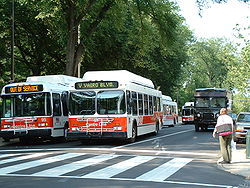
Unitrans is the transit system which operates in and around the campus of the University of California, Davis. It takes its name from an abbreviation of the words "University Transport". Excepting several managerial and maintenance positions, Unitrans is managed and operated entirely by students of the University of California, Davis who usually work part-time while attending school. The system is well known throughout the area for its use of several distinctive ex-Transport for London double-decker buses, as well as its fleet of modern natural gas single-decks. The system has 18 weekday, 1 school-centered and 6 weekend routes. Current fares are $1.50 for the general public and included in student fees for undergraduate University attendees. Unitrans is one of a small number of transit systems in the United States to operate double deck buses in regular (non-sightseeing) service. Unitrans has one of the best safety records of any public transit system in the US.
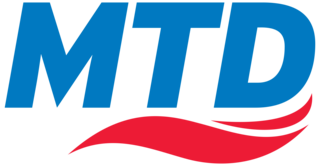
The Champaign–Urbana Mass Transit District is a mass transit system that operates in the Champaign–Urbana metropolitan area in central-eastern Illinois. MTD is headquartered in Urbana and operates its primary hub at the intermodal Illinois Terminal in downtown Champaign. In 2023, the system had a ridership of 8,947,600, or about 32,700 per weekday as of the third quarter of 2024.

The Toronto Transit Commission (TTC) uses buses and other vehicles for public transportation. In 2018, the TTC bus system had 159 bus routes carrying over 264 million riders over 6,686 kilometres (4,154 mi) of routes with buses travelling 143 million kilometres in the year. As of 2021, the TTC has 192 bus routes in operation, including 28 night bus routes. In 2023, the system had a ridership of 362,041,400, or about 1,179,700 per weekday as of the third quarter of 2024.
The MTA Regional Bus Operations bus fleet is a fleet of buses in fixed-route service in New York City under the "MTA New York City Bus" and "MTA Bus" brands, both of which operate local, limited, express and Select Bus Service routes.

The Greater Lafayette Public Transportation Corporation (GLPTC) is a municipal corporation founded in 1971 that provides bus services in Tippecanoe County, Indiana under the operating name of CityBus. In 2023, the system had a ridership of 4,447,400, or about 17,100 per weekday as of the third quarter of 2024.

Embark is the public transit agency of the COTPA trust, the largest transit agency in the state of Oklahoma. Embark has 20 interconnecting bus routes covering the city of Oklahoma City and parts of the Oklahoma City Metropolitan Area, including weekday Express service from Norman to Downtown Oklahoma City. Embark also operates paratransit, the Oklahoma City Streetcar, downtown public parking, bike share, and river ferry services. Additionally, Embark provides administrative and executive support for the Regional Transportation Authority of Central Oklahoma.

Fresno Area Express (FAX) is a public transportation operator in Fresno, California. The system had over 100 buses, 1,606 bus stops, and 18 routes as of August 2022. In 2023, the system had a ridership of 8,973,000, or about 40,300 per weekday as of the third quarter of 2024. FAX fixed routes run as far south as Malaga to Valley Children's Hospital in the north. Lines also run as far east as Fowler Avenue in Clovis, and as far west as Hayes Avenue near Highway 99 in western Fresno.

The Capital Area Transportation Authority (CATA) is the public transit operator serving the Lansing, Michigan area, including service on the campus of Michigan State University. In 2023, the system had a ridership of 8,082,200.

Metrobus is a bus service operated by the Washington Metropolitan Area Transit Authority (WMATA). Its fleet consists of 1,595 buses covering an area of 1,500 square miles (3,900 km2) in Washington, D.C., Maryland, and Virginia. There are 269 bus routes serving 11,129 stops, including 2,554 bus shelters. In 2023, the system had a ridership of 103,438,600, or about 393,300 per weekday as of the third quarter of 2024.
Laketran is the transit agency that serves Lake County, Ohio, the county northeast of Cleveland. It is the third-largest transit system in Northeast Ohio, serving Mentor, Painesville, Willoughby, Wickliffe. Eastlake, Fairport Harbor, Madison and other Lake County destinations. In 2023, the system had a ridership of 629,500, or about 2,600 per weekday as of the third quarter of 2024.
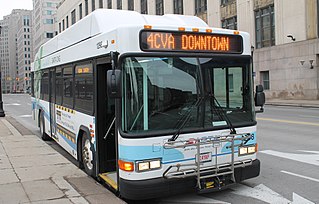
Stark Area Regional Transit Authority (SARTA) is a public sector transit agency servicing Stark County, Ohio. In addition to its regular line service within Stark County, SARTA runs one bus route between Canton and downtown Akron, connecting to Akron's METRO RTA bus system and also serving the Akron-Canton Regional Airport from both cities and one route to Cleveland starting March 4, 2013. In 2023, the system had a ridership of 1,371,600, or about 4,900 per weekday as of the third quarter of 2024.
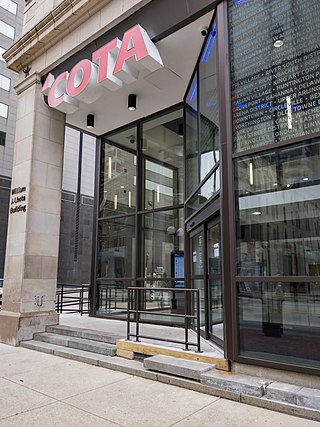
The Central Ohio Transit Authority is a public transit agency serving the Columbus metropolitan area, headquartered in Columbus, Ohio. It operates fixed-route buses, bus rapid transit, microtransit, and paratransit services.
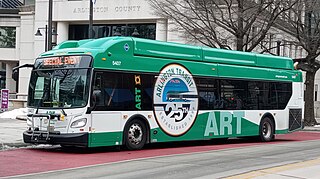
Arlington Transit (ART) is a bus transit system that operates in Arlington County, Virginia, and is managed by the county government. The bus system provides service within Arlington County, and connects to Metrobus, nearby Metrorail stations, Virginia Railway Express, and other local bus systems. Most ART routes serve to connect county neighborhoods to local Metrorail stations, as well as the Shirlington Bus Station. It includes part of the Pike Ride service along Columbia Pike, which is shared with WMATA. In 2023, the system had a ridership of 2,258,200, or about 8,400 per weekday as of the third quarter of 2024.
CamTran, originally called the Cambria County Transit Authority operates mass transit bus service within Johnstown, Pennsylvania, Cambria County, and Windber, Pennsylvania, Somerset County, Pennsylvania. CamTran also operates the Johnstown Inclined Plane, which they took over in 1983 from Westmont, Pennsylvania borough. The transit system began operation in 1976, from the remnants of the Johnstown Traction Company. While the Cambria County Transit Authority (CCTA) began operation on July 20, 1976, service did not begin until December 1, 1976. In June 1999, CCTA became CamTran. In 2023, the system had a ridership of 752,700, or about 2,300 per weekday as of the third quarter of 2024.
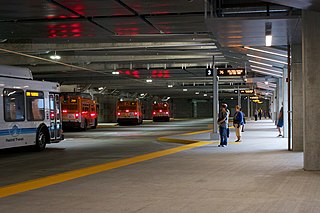
The Los Angeles County Metropolitan Transportation Authority operates a vast fleet of buses for its Metro Bus and Metro Busway services. As of September 2019, Metro has the third largest bus fleet in North America with 2,320 buses.
Torrance Transit is a transit agency primarily serving the South Bay region of Los Angeles County. In 2023, the system had a ridership of 1,868,200, or about 8,600 per weekday as of the third quarter of 2024.
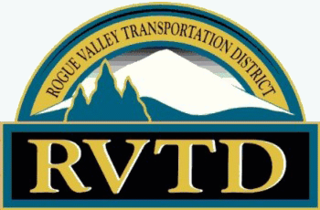
Rogue Valley Transportation District is a transportation district serving the greater Jackson County, Oregon area. The district serves the cities of Medford, Ashland, White City, Phoenix, Talent, Jacksonville, and Central Point. The district also provides paratransit services to older adults and people with disabilities within its route coverage area.

Berks Area Regional Transportation Authority (BARTA), previously Berks Area Reading Transportation Authority, is a public transportation system serving the city of Reading and its surrounding area of Berks County, Pennsylvania. The South Central Transit Authority owns BARTA and the Red Rose Transit Authority (RRTA). In 2023, the system had a ridership of 2,276,000, or about 14,800 per weekday as of the third quarter of 2024.

Butler Transit Authority, also known as theBus or the BTA, is a public transportation service in Butler, Pennsylvania. The service provides local transit in central Butler County and commuter routes from Butler to Pittsburgh. The BTA operates a fleet of 12 buses. The service transports nearly a quarter million passengers annually.

Presidio Go Shuttle is a public transit system in San Francisco, California serving the San Francisco Presidio. The service includes two routes: the "South Hills" route providing circulator service within the Presidio, and the "Downtown" route connecting to Embarcadero station and the Salesforce Transit Center in downtown San Francisco. The routes connect at the Presidio Transit Center, which is also served by Muni bus route 43. The service is nominally free public transport, although a rider pass or Muni Visitor Passport is required for some trips during rush hours. Operations are contracted to MV Transportation and are overseen by the Presidio Trust.

